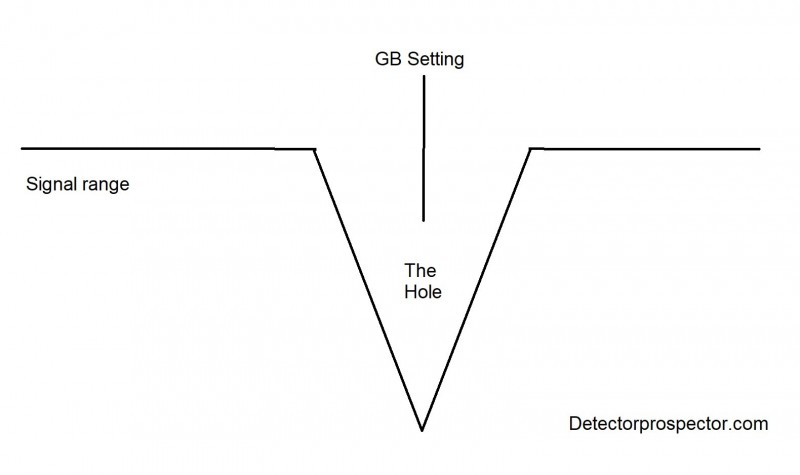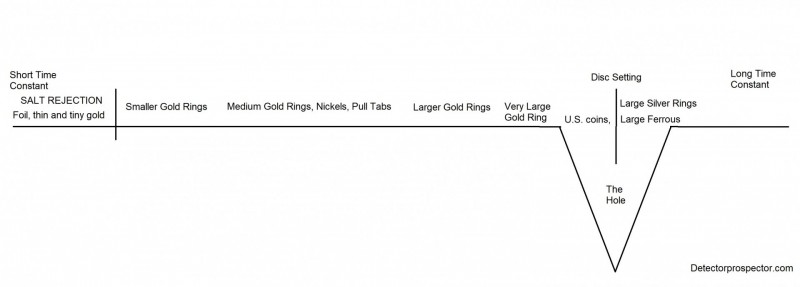Leaderboard
Popular Content
Showing content with the highest reputation on 03/29/2021 in all areas
-
“As proven today, the finding of military ordnance from the Civil War is not uncommon in Maryland, and these devices pose the same threat as the day they were initially manufactured,” the fire marshal’s office said. People are encouraged to report such discoveries to the authorities and remember that even vintage artifacts can be deadly. In 2008, a man who collected Civil War relics died after a cannonball he was attempting to restore exploded.” https://www.nbcnews.com/news/us-news/bomb-squad-detonates-civil-war-cannonball-found-maryland-n12622765 points
-
I normally don't dig for bottles but when my Brother-In-Law told me about all the glass they were seeing at this site, I decided to go take a look. The site dates from and the bottle we were digging are from 1850's to about 1900. Nothing real valuable came out but there were some real heartbreakers (broken bottles) like log cabin bitters, California bitters and a few others. We also recovered marbles, coins and tokens, but nothing real exciting to mention specifically. We used a trenching method to recover the bottles. There was about 8-10 inches of topsoil then a layer of trash that extended down to about 3 feet deep. We would dig about a 3 foot by 3 foot hole straight down and then start trenching and backfilling as we went. Between the 4 people that were there I would guess we recovered about 150 bottles. I will say I'm feeling it this morning after digging about 9 hours over the weekend. Hope to get back there again next weekend and I'll post my finds of that trip next week. Pictured below are the bottles I recovered.5 points
-
PART SIX: Here are the results of another round of soaking in the Whink solution and using baking soda and steam cleaner. Specimen A still has a lot of the host rock to remove, Specimen B has some host rock embedded in between the wires of gold, Specimen C has a tiny amount which the photograph does not show and Specimen D needs no further cleaning. At this point going forward using the Whink solution is not going to have the results I like to achieve. Next step I will use Muriatic acid with another round of baking soda and steam cleaner. I will post photographs of the final results of the last cleaning.5 points
-
"this year, do not know exactly when, hopefully sooner than later" "close to testing stage" "confident this will be a good machine" "simultaneous multifrequency, but also many single frequencies" "in the Simplex housing, but this is not a multi Simplex, but something new" "coil will be completely different from Simplex" "some upper shaft differences" "lower shaft will be carbon fiber" "user replaceable, changeable battery; field swappable" "not going to be priced as low as Simplex, but will be competitively priced versus the competition (Equinox)"5 points
-
This is serious stuff for sure, I didn't know Sam White(the man who died in 2008) personally but I do know several of his friends, and as stated in the article about his death he was a pro at disarming and restoring these CW cannonballs and was the man in the N.E. USA to go too if you found one, it just goes to show even the experts can make a mistake. When these cannon balls were new it was still dangerous to disarm one but it was much easier, all you had to do was carefully remove the fuse with a special tool and then remove the black powder. But after these cannon balls have been in the ground for over 100 years the fuse is so corroded that is no longer an option, the only way to remove the black powder is to drill a hole to remove the black powder, that as you can imagine is very dangerous, one little spark or over heating the metal leads to the powder igniting, which is what most think that happened to Sam on that tragic day he lost his life. Sam drilled the cannon balls with a drill press in his garage and has done well over a 1000 with no issues, but the odds ran out on him on that day he lost his life. There's one other guy I know of who does this as well and I think that maybe Steve H. knows him as well...Steve Phillips of SSD (Southern Skin Divers Supplies) in Alabama, Steve is a long time collector of CW artifacts and has an extensive collection most of if not all he has found himself while diving and metal detecting in Alabama, he's also a long, long time Nome gold dredger, which is where Steve H. may know him from. http://ssdsupply.com/ Steve disarms these cannon balls using a "remote controlled" drill press he designed himself and in small shed out in the middle of a large field so if the cannon ball does explode while he's drilling it(which I don't believe has ever happened to him) no one get injured or dies. That all being said it best to not even touch one if you happen across one, call the local police immediately!!5 points
-
For beginning users, this video will help you learn navigation of your MDT instrument panel quick. HH! Aaron4 points
-
4 points
-
Welcome to this forum Sapper091!!!. Minelab has three coils for the Equinox. Coiltek has also released three coils for the Equinox that were produced with Minelab's permission. No other currently existing coils will work with the Equinox. I seriously doubt that Minelab would sanction any other third party coils and would sue the heck out of anyone that tried to release one.3 points
-
Always remember to bring plenty of water when the ground is dry as a bone. Once you have the item out of the ground and hole filled in add a little water to help everything seal properly. That way it is less likely to kill the grass in a nice area of the park. Good luck and happy hunting3 points
-
Thanks for any help or direction you can give. The knife is wood on one side and celluloid (maybe) on the other. The spike is from the same field as the other iron piece I found. I couldn't help but hear Gary D.'s voice say something about a decking spike off a Spanish galleon.😁 I am now digging the deep iron in the area these came from. The other signals are either masked or most are gone due to being dug. Thanks again for your wisdom.3 points
-
Agree X 2 VicR. I think it is a quality control issue as I have a Pro-Find 35, use it often with the Equinox and have also used it with friends' GPZs and don't have an issue with it. It works perfectly pretty much every time. And to be honest, I don't actually even know how to change the sensitivity or use the discrimination feature - just turn it on, beep/beep and it works. I've even used it multiple times underwater in the river - no issues. I think others are getting units that have manufacturing faults with them. "It works perfectly pretty much every time". The one caveat - I have had one place where my 35 would sound off frequently all around the hole but this was highly mineralised ground and not a product fault - just a limitation due to mineralisation that most detectors have. If people have issues with their Pro Find I'd suggest returning it.3 points
-
No complaints about either the Garrett Pro-Pointer AT or Fisher F-Pulse. Both are great, but the Garrett is probably the easier for most people. The F-Pulse is easier to get lost in the menu settings, but also tougher, less tip wear. I tend to grab the F-Pulse as it also handles high mineral ground better, plus I like that it uses AA batteries instead of 9V. In either case I rarely use a pinpointer while nugget detecting. I always have one around though, as they can be useful for deep trash targets more than gold. Off center nails are my most recovered target, not nuggets. I’m only pulling it out for hold if the nugget sounds very large and is in bottom of narrow hole in hard digging ground. Then the pinpointers helps insure I don’t hit a trophy nugget with my pick. All detectors - turn on pinpointer first, then turn detector on nearby and noise cancel. Never lost a pinpointer but use no special tricks in doing so. I just hate losing $100 bills enough that it does not happen. Fisher F-Pulse and Garrett Pro-Pointer AT3 points
-
Ok my first post....go easy on me Is it possible to use other brands/makes of coils on my Equinox 800?2 points
-
We got permission to hunt a park that use to be a Girl Scout camp from the 1920's to the 1990's when it closed down.The head caretaker of the park is a great guy and gave us the green light to detect there.We gave him a few scout relics which he would put in the park museum and he was very grateful for are finds.He told us that one capsule was found but a old farmer said a other one was still missing and gave us the area it could be in.It is probably from the 30's or 40's.I think the one is in a museum around here and we hope to see what it is made of.Have any of you heard of other Scout capsules and what could be in them ?I hope they are detectable.If not we could still stumble on to some silver coins or rings for a consolation prize. If found we will give the capsule to the caretaker to be put in a museum.2 points
-
2 points
-
Good news, I have eventually received my Apex back from the European Garrett support ... 🙂 My seller ( Bruno at Lutece detection in Paris ) told me that the pb ( false signals etc see above ) came from a faulty coil . So I received my Apex with a brand new Viper coil , plus a 5X8 Ripper coil that Bruno asked me to test. I decided to restart the tests from the beginning with the static tests on my tests boxes / different targets at different depths. The results were good for both coils , but I decided to try first the Ripper in the field , because I have been very impressed by its light weight ( 330g instead of 400g for the Viper ) and I like light machines ... And also because in france we often detect in iron infested sites , the Viper is a little too big for that and for me the Ripper has the perfect size for searching small/very small coils in nail beds .. So I went to one of my favorite testing locations , a wood near a small town . The soil there is infested with iron trash dating from the medieval up to modern times. A very good place for testing machines in a very difficult iron trashed environment. I will give more details in a new thread , but to summarize the Apex + Ripper have done an excellent job 🙂 . First the Apex has an excellent iron filtering , it was almost silent on the nail bed , just beeping on the good targets , very impressive . The Apex is also very fast , it is much more reactive than a Vanquish or even an Equinox . The signals on targets are very sharp and accurate , perhaps a little too sharp btw , but it is just a matter of getting used to the audio I think . Also the wireless headphones MS3 Zlynk are excellent , no latency and very reliable. For info I used the MF mode during all this test No treasure found during this short outing, mainly 1st WW rubbish , but again I have been very impressed by the Apex with the ripper coil. Clearly at Garretts they have designed/tested the Apex to work on high iron trash environments., as stated in their Apex marketing brochure. And it looks like they have done a very good job ... Just a few things that I do not like , for example the shaft which is clearly outdated Now I need to confirm all this and detect more hours with the Apex to check that everything is ok , no more falsing etc , I will detail all this in the new dedicated thread ... A few pics below , the Apex with a Quest X5 , the Viper and the Ripper coils , the Apex + Ripper weight , and the wood ..2 points
-
Same here Cuda, Sorry to hear.. and maybe the first I've heard with this issue. Maybe the headphones? ..the power cable?..or a leak? Leaks seem to work like that... "it was fine the last time but now...it no longer works" . Anyway, they have a great machine if it's working correct .... Quality control .... is the issue. Keep us informed,, Thanks2 points
-
Welcome to the forum - nice little nugget If I was going to Southeast Alaska, I would take the Gold Monster before the GPX 5000. The gold in the region is generally very small, and in general it’s hard rock country, not placer. Glacial terrain, high mineral coastal belt. The mineralization calls for a PI, but a GPX 5000, no matter what coil, will never match a good VLF on small gold. A GPX 5000, I would get either an 8” Commander Mono, or Nugget Finder 6x8 Sadie Coil, and try to run Sensitive Extra The problem with small gold is you need a hot detector. But a hot detector struggles with bad ground and hot rocks. It’s a balancing act. Sensitive Extra may be too hot for your area, so use Fine Gold instead. It can handle the hottest ground, but it misses more gold than Sensitive Extra. And the fact is neither setting on a GPX 5000 will be good on the smallest gold, that a Gold Monster can easily hit. Frankly, I’d go SDC 2300 before GPX 5000 for your region. With an eye on the new GPX 6000. But for working with what you have, I’d grab Gold Monster first. If the ground defeats it, then GPX 5000 with Sadie coil. Glacial terrain offers complex challenges for metal detecting, with gold almost anywhere or nowhere. Glaciers are like bulldozers, mixing and making a mess of everything. Placers are very new, generally lean. Learn about things like moraines and eskers, and study where water flows around existing glaciers for clues. Gold placers can exist in lateral moraines halfway up valley walls. Like I say, use your imagination, and put the coil over everything. Good luck! Glaciers and Gold2 points
-
All unexploded ordinance (UXO) disarming operations I’ve seen used a automatic or remotely controlled saw, drill, or a disruptor device to disarm shells, in addition to sandbagging. They can be quite simple devices too- one team used a standard miter saw with a cable and overhead pulley to lift and lower the blade remotely. I am surprised to read that guy didn’t do this correctly with the civil war shells he was disarming. How sad! Steve’s warning is definitely one to be heeded! One issue in our area are the scrappers that trespass onto the desert proving grounds to collect old brass- several have tried cutting it up at home and popping it by accident. Darwinian selection usually weeds them out from the gene pool pretty quickly.2 points
-
2 points
-
To me, the most important part of Dilek's video was her clearly stating that the new Nokta Makro simultaneous multi frequency detector is being built to be a direct competitor of the Equinox. She also made it clear without naming names that Nokta Makro does not consider the unnamed Garrett APEX as a viable competitor for the new Nokta Makro SMF detector. I hope Nokta Makro is right in their assessment of their new SMF detector. That would be great for a more competitive market and for us most of all. I have always been extremely impressed with Nokta Makro's detectors. I don't currently own one but I have owned five of them in the past and they are outstanding.........just not as outstanding where I detect as the two detectors she discussed in the video without mentioning names (Equinox and Deus). So, do I save a little money and buy the Nokta Makro SMF or get a personal loan/sell a car/dip into my retirement/or sell all of my personal belongings (except my detectors) for the GPX 6000?2 points
-
Here ya go on the railroad spike: https://www.sizes.com/tools/spikes_railroad.htm It's a 3 1/2 inch. Not sure about the knife, could have been repaired.2 points
-
Also, it seems that simply looking for increasing concentrations of silver in nuggets is the XRF equivalent of panning up a hill until you find the source. If you start finding a line where every nugget is increasing in silver concentration, then it may be a good bet that the source is or was at one time located somewhere up that line/direction.2 points
-
I am careful to look after our rights, and so prefer not to detect grassy areas when bone dry. Too much risk of turf damage. So I actually like the rare rains in my area, and hit the parks hard when the turf is moist. Easier digs, and less likely to leave dead spots. As far as time, I am rabid about avoiding people, so a rain storm helps me more than hurts. Early, late, whenever.... my main goal is to avoid eyeballs, and I generally leave when more than a few show up. I do not like at all being watched when I'm doing any kind of urban metal detecting.2 points
-
Even though there are obvious limitations with anayzing audio signals from detectors, there are definitely implications that could benefit the hearing impared in this hobby. I'm about chest deep into this now and working on some possible useable solutions. As I make initial builds and testing, I will post my observations. I will also post all of the instructions and list of parts and where to find them so that anyone can make it or help in the progression of this idea. I'm also trying to keep the builds as simple and cost effective as possible so everyone can to do this if they want to.2 points
-
Try the Commander 11” DD coil with the Coil/RX switch set to Mono, in conjunction with the Fine Gold timing; you will effectively have an 11” x 6” pseudo-monoloop, where the left half of the coil is hot, and will be even more sensitive than the Commander 11” mono or the 12” x 8” Goldstalker, with the added benefit of being able to handle mineralized ground better than a straight mono coil. Better yet, try it with a Commander 10” x 5” DD coil.2 points
-
Andy, Looks like fun. I only had heartbreak broken glass for me this weekend at Brandy Rock but it was still fun. Congrats.1 point
-
1 point
-
Whoa! That is some great glass there Abenson!! They look to be in perfect condition for the age. The Great Dr. Kilmer's Swamp Root is my fav!! Of course, my last name is Root, so that may be why 😉.1 point
-
XRF's hold sort a mysterious place on the shelf of semi-unobtainable prospecting equipment. 99% of prospectors don't need one. Maybe this post will help clear up some of mystery around these devices, and show where they can actually be worth the outlay of capital. And why for almost all recreational/hobby prospectors, they are not worth the money. What does an XRF do? In very simple terms you point it at an object and it will tell you what elements are in that object. More on this, and why it isn't this simple, momentarily... After sometime over 5 years of searching, I was finally able to find a used XRF I could afford to finance recently. These are not tools for recreation. They are expensive and require understanding how they work, what tasks you need to accomplish, and understanding the limits of XRF. The trick with these units is to find one with the proper calibrations already installed as they can be many thousands of dollars to send to the manufacturer to get configured correctly for mining/prospecting uses and to add/subtract elements or to calibrate for certain matrixes (silicates/iron/etc). X ray tubes and X ray detectors are about $6k each to replace, and recalibrations are about $1500 a pop, so even maintenance is crazy expensive. It's a tool you need be certain you need or can put to good use before buying one. And buying used, it's probably best to find one with as few hours use as possible to delay the inevitable tube replacement, as well as with a recent calibration certificate. My unit is an XMET 7500 made by Oxford (now Hitachi). The more common units people generally see are the Olympus and Niton guns. This unit has basically every mining calibration Oxford offered on it in addition to soil and other specialized mining related modes, which is very valuable and very useful for prospecting. It also detects down to magnesium without any fancy helium purge techniques. The guns sold on ebay with only alloy calibrations are pretty useless for prospecting without spending a lot of $$$ on additional calibrations. Some other things to consider are the machines themselves vary greatly between model numbers and some models may be unsuitable for specific uses in prospecting. A few things to educate yourself on are: Beam energy and detector type (determines if certain elements can be detected at all, and how accurately) Electrode composition (Gold electrodes have lower sensitivity to gold in ores, for instance) Calibration to light elements, or ability to detect certain elements I don't think an XRF is particularly useful for people who are only looking for gold. Due to the electrode limitations, the PPM minimum to detect gold in ores can often be above what would be an economic (and thus desirable) concentration in gold ores. But, looking for tracer elements (stuff like Pb, Cu, As, Zn, etc) can be quite useful. It can also help outline buried ore bodies which can then be explored mechanically via drilling or other methods. For prospectors branching out beyond just gold however, an XRF can be even more useful. And that's when one needs to understand the elemental limitations and what your application specific uses are. Any affordable XRF today will not detect lighter elements than magnesium. Some will detect to magnesium, but then do not contain calibrations to allow it (extra $$) and some require helium purging to measure light elements. Elements like hydrogen, carbon, oxygen, and sodium are very common "rock building" elements. But XRF readings will lack these measurements. So, when a looking at a rock your readings will often give fractional (less than 100%) results. This is why - the missing mass is tied up in atoms lighter than magnesium. Fortuantely, a lot of common rock types have unique fingerprints still in elements such as Mg, Al, Si, P, S, Cl, K, Ca, and Fe. But some don't. This is why it's important to understand what you are looking for first in the field, and then find a tool that is going to match your needs. Further, a lot of minerals in certain locations but not other locations will also have further fingerprints in other elements such as Cr, Co, Mo, Nb, certain compositions of rare earths, etc. To make it more complex (this part took me a while to wrap my head around), each calibration within the machine may or may not be configured for some of these elements - even if they are within the range of detection of the machine! Like, an alloy calibration will have little use for silicon or calcium. Conversely, a mining calibration without magnesium or calcium may be next to useless depending what you are looking for. Of course, it costs extra money to add elements and even if you have for instance a precious metals calibration that includes platinum, the mining mode may not itself include platinum and that's more $. That is why the matrix matters, each mode can be calibrated to a specific matrix. Like mining modes are generally going to assume that the sample is mostly silicon, whereas precious metals mode might assume the only things that exist in the universe are metals. So if you analyze solid metal with mining mode it may misidentify elements thinking they have to be metals when they aren't, same as if you analyzed a piece of gold ore in precious metals mode where it will try to assign certain non-metallic spectra in the ore to something like gold or platinum, giving you false positives. This is why calibrations available and elements assigned to that calibration is so very important when it comes to XRF and accurate results. Why else is XRF bad for gold-specific uses? (I emphasized this because this is primarily a gold prospecting site, even though I prospect for many other things myself). First one needs to understand how XRF works - simply put it kicks a few electrons out of a few different orbitals around an atom at discrete energy intervals (these are spectral "lines"). When another electron falls into the empty orbital to replace the vacancy, another X Ray is emitted at this discreet energy. Unfortunately, some elements have some very close to identical spectral lines. Look here at some lighter elements and see the overlaps on this visible spectra chart that we use to ID elements in stars? Some might be familiar with these from astronomy or high school. Well, the same happens in the X Ray realm. This is coincidentally why ionized gases look a certain color to us and how "neon" signs can be different colors (different elements inside the tubes). The same thing happens in the X ray spectrum, just not visible to our eyes. Except when the X ray spectra is reaaaaaaally crowded around the gold lines. Making it hard for specific ID's when other elements with similar lines are also present in ore, and unfortunately some of the elements are also commonly found with and around gold mineralization. Combine this with the anodes on many affordable XRF's being gold which itself interferes with really precise Au measurements, and you can see why an XRF isn't the best tool for specifically gold prospecting. Here is an actual XRF spectrum. You can see how very common accessory gold ore elements populate and crowd the gold spectral lines at various orbitals. And also how you might be missing critical lines if your X ray tube only goes to say 15kEV instead of 40kEV (EV stands for electron-volts), you might miss some Ag, Ru, Cd, or Zr fingerprints in this specific case. Now notice how iron stands all alone? That's why some elements (iron) are easier for an XRF to ID than others like gold. So for some such tracer elements in soils and ore, and identifying certain minerals which really can only be accurately identified via spectroscopy or thin sections as for some gems, an XRF can save months of time and thousands of dollars for in field qualitative assays to do first stage determinations, ie, wether a resource is simply present or not, ignoring actual concentrations. This is why it's so important for anyone considering one of these units to know exactly what they are looking for first, to know the limitations of XRF, and to know if a unit will meet their application specific needs. Almost every company I spoke with had a story about a prospector, or even a few cases some junior mining companies, who purchased an expensive unit only to find it wouldn't work at all for what they needed to do. So hopefully this clears up a little mystery about XRF's and maybe saves someone from making an expensive $15k mistake. I am by no means an XRF expert and everything I know is just self taught. So if I've included an inaccuracy then please correct me. This is not intended to be definitive, but just to share what I've learned over the years in a few pages of simpler to understand jargon for those prospectors interested in these devices. More later with some actual measurements...1 point
-
If there is anyone out there with a Lobo ST, it appears there is a need for a good, clear set of circuit board photos, that can then be marked up with notes. There are bits and pieces of info scattered about, but I’ve not found a clearly noted Lobo circuit photo despite some time with Google. Tesoro Lobo ST Data & Reviews1 point
-
Could it be a surface selection effect? Are there chemical leaching processes that selectively remove the copper from the surface? It would be interesting if you could cut a nugget and zap the resulting inside surfaces (but of course that would devalue your nugget, I realize). I suspect at least platinum would alloy with gold since mercury does, but I really don't know, either. However, I think Pt will be hard to distinguish even with the high resolution of the gun's detector. Note that atomic numbers of Pt, Au, and Pb are respectively 78, 79, and 82. Your original post had a spectrum that showed the Pb L lines (about 8-9% separated in energy) being on the shoulder of the Au L lines. The Pt L lines are only 2.5% to 3% separated from their Au counterparts.1 point
-
I did go yesterday but, nothing good. It was hot and the ground was much drier. I will hit it again next weekend.1 point
-
Welcome aboard Sapper ! The Equinox is a lot of detector in one unit , start out with the great presets and learn to adjust it as you follow along here. What types of things do you want to look for and where are you hoping to look ? That will give us something to narrow in on . Ask any specific questions too. And join in on anything you would like to comment on. There is a LOT of accumulated knowledge here (you already hit the jackpot when you signed up)! While you wait for more responses there are lots of good info here already. Steve's Guides is a good place to start. When you finish there you'll already know a ton of the basics and some not not so basic too. There is also a sub forum to the Minelab forum all about Equinox. https://www.detectorprospector.com/forums/forum/53-minelab-equinox-forum/ I've only been here since last fall and I'm still catching up with all of the previous postings on all the forums . .1 point
-
I've followed 3 or 4 videos from her and other posts. What I like is her straight up , no BS approach. I can respect her saying "sometime this year." She hasn't been wrong yet. Unlike others , who say " maybe in April , then , maybe in July". Just stringing you along with the BS. Anyways , I'm looking forward to this detector when it does come out. I've never owned a Nokta before. Would like to give it a chance.1 point
-
My Impulse needs to go back to Fisher for repair, so, that may delay the release of "new and improved version" depending on what they find. I went to use it yesterday, and it was totally dead.....wouldn't turn on or make one peep. Tried with both fully charged batteries so that wasn't the problem. It's been a rather disappointing machine for me too. I'll keep you posted as to what they find.....if they will disclose that to me.1 point
-
I usually target parks during the week days, either early in the morning (daybreak until the park goers start arriving) and some in the evening. Usually parks are a little less busy during the week. On weekends, I steer clear of parks for that same reason. I look for aged school grounds on weekends and holidays. Of course, my work schedule doesn't always cooperate with that plan.1 point
-
You don't need an expensive "smart" charger. You can buy a buck converter on Ebay, that allows setting the max charge voltage, for about $30.00. I've been using mine for several years. I can use it for both my 16volt 4-cell packs, and my 3 cell 12volt pack. I can use it for any pack from 1.5v to 30v. https://www.ebay.com/itm/DROK-DC-3-5V-15V-to-DC-0-6V-30V-Buck-Boost-Converter-5v-to-3v-12v-24v-2A-15W/333937403216?hash=item4dc0386550:g:aCgAAOSwjRlgYAxb Jim1 point
-
Here's one that sold on Ebay for $44. (I would have taken the Merc instead. Shows what I know.) Other sites say possibly from the 1930's. One thing I've noticed about dating things on the internet (especially on Ebay) -- someone gives a date of origin without evidence and others glom onto it like it's fact. Tokens seem to get resurrected, too. I have some that I think are from the 1940's and others (same depiction) that are probably '80s or '90s. This is probably brass. If you have Wheaties you've found in that same location, compare the patina. If they typically are this nice after recovery, that's evidence this has been in the ground a similar amount of time (> 40 years). Most of my Wheaties come with a green scale so I expect my old brass tokens to have a similar property. (Your low humidity out West seems to be nicer to copper alloy coins than our damp Eastern USA.) Unusual find, IMO, and a good chance it's Great Depression Era. BTW, the Eureka Club in greater Denver has a token category in their monthly meetings. A veteran there may be a good source of info as to whether or not anyone has ever entered one of these. (A "no" is another good sign it's quite old. A "lots of them" just the opposite.)1 point
-
For me it depends on what park I'm hunting and what time of year. Some of my parks get a lot of people in the warmer month's, so I usually try to go early and leave by 9:00am. In the cooler months I pretty much roll in around 11:00am and hunt the rest of the day. It will take a little time to get all of your parks schedules figured out. One thing I do is check and see if the park has an online calendar to see if they have scheduled events for the month. Nobody wants to start hunting and find out a soccer game is starting on the field your in. As for the rainy day hunts I just don't bother unless it's a one time only hunt. I'm not a big fan of digging mud and getting soaked.1 point
-
If you hit a large virgin patch you will find most worthwhile nuggets you will get are in the 0.1 to 1.0gms range. in most of the area you cover this will be the case, but you may get a few bit ranging from double number gm to multi ounce bits but they are easily heard till you hit deeper ground. At this stage a bigger coil is the way to go. As Lunk said using a double DD coil in pseudo-monoloop will really help in cleaning up tiny bits. I have used this method many times when I was too lazy to go back to the 4WD for a smaller coil. Note when pinpointing in this mode the centre of the signal will be on the side and centre of the transmit coil, the same goes with using the edge of the coil it is on the transmit side also.1 point
-
I’m seeing the same with using the 12” coil, better stability. Can run full sensitivity with 12” in open inland areas, Before with stock couldn’t operate at max. Mix mod is deeper than all-metal mode, have a shield nickel buried at 14.5” inches at a test bed in an actual 1850 relic site. Tarsacci with 12” coil gets it both directions using mix mode and I’m not talking iron audio only it’s both conducive and iron audio, switch to all-metal it’s very faint to almost not there. I don’t care for discrimination mode, it’ll detect the 12.5 buried shield nickel but really don’t care for the short target response. My opinion, using disc mode one can easily miss a deep target, audio response is to narrow kind of like a chirp. Mix mode is definitely my favorite, 12” coil is a winner. Will never slap on the stock coil again, 12” definitely deeper and operates with higher sensitivity. Separation, fantastic! Paul1 point
-
The 12x8" Nugget Finder Evo coil running in Fine Gold will get you closest to the sensitivity of the Gold Monster, but will punch deeper and handle the ground a lot better.1 point
-
He said he did that with the cables, but not necessarily with the charger. What typically happens is that the headphone charge connector solder point fails. I don't like the ML phones as the ML firmware creates a muddy equalization bias, so I have a couple just laying around. If interested PM me a reasonable offer.1 point
-
As a diagnostic, can you plug the ML headphones into the WM08 module to see if that part works? Someone said the ML phones are same parts as the SR71 headphones so you might find some battery replacement video or instructions for those. (The new ones have a BT problem with ML but I have not followed that thread, may be OK now)1 point
-
We have been given a provisional date of 26 Apr for travel within Scotland to be permitted. So I'm hopeful, weather permitting, of getting onto my sites to give this coil a chance of showing me what it's capable of. Really looking forward to swinging it! Will keep readers updated.1 point
-
Nothing that is enough that anyone has noticed or found it. The update gives you 4 kHz. The previous one added F2. The one before that repaired some silver disc mapping. That’s it really. https://www.detectorprospector.com/forums/topic/13347-equinox-software-update-30/1 point
-
The beautiful "Wolf" button is what is commonly known as a Sportsman or Sporting button, most of which are made in England generally 1840s-60s. I have also seen them sometimes referred to as livery buttons. They are assumed to have come from a large over coat or hunting jacket . In some cases each button depicted a different animal on the same garment. They were apparently a very popular coat during the California gold rush and often turn up in gold camps.1 point
-
I have seen it said a few times now that the new Fisher Impulse AQ has "no holes". This started as a very specific mention on the part of the designer, and now has been expanded into a range of assumptions that do not match how I view the subject. First, what is a "hole?" The classic definition originated around ground balancing pulse induction metal detectors. The first and most simple ground balance method is a basic subtraction. Determine where the ground is reading with the detector, then provide a control to subtract that signal. Many people do not realize that ground signals and gold nugget signals within normal range are basically infinite and overlap 100%. This is due to the nature of natural gold nuggets, which occur in endless variety as far as size, shape, and composition. When added to the ground, they mix and blend with the ground signal, and in one way can be considered a naturally occurring component of a ground signal. There is one simple rule you must keep in mind that makes all discussions of a "hole" simple. For every potential ground signal that exists, there is also a corresponding gold signal. The ground balance control is just a special discrimination control. When you eliminate any one type of ground signal or hot rock, you automatically eliminate any gold signals that are identical to those ground and hot rock signals. The nature of the electronics involved is not 100% in that the ground balance rejection point is not perfectly sharp edged, but covers a small range. Within this rejected ground range, you have the most intense rejection effect at the setting itself. However, items that fall close to the setting, while not eliminated, are weakened, and deliver less than normal depth. The effect is similar to that seen when black holes are diagrammed, and targets that are unintentionally eliminated because they fall into this range are said to "fall into the hole." The classic metal detector ground balance "hole" This can also be seen with many VLF detectors. Take a detector with a manual ground balance control, and grab a coin. Air test the coin depth, while running the ground balance control to both extremes. Depending on the coin or target you test, like a gold ring, you will usually find that the depth varies with the ground balance setting. On a simple ground balance detector with a single ground balance "channel" the effect is quite pronounced. On the White's TDI the ground balance setting is normally around 8. This also corresponds with nuggets weighing approximately 1/4 ounce, though again, because of the natural variation of gold nuggets, the range is actually very large, and based on the time constant of the nugget, not any particular weight. Any nugget that reads at the setting of 8 is essentially eliminated. Nuggets that fall near to the setting have greatly weakened responses. Minelab first addressed this issue with detectors that have two ground balance "channels". Channels have historically referred to detectors that have two separate ground balance "channels" but people are now misusing the term to refer to detectors that are returning dual audio results that can be separated into "channels." This is not the same thing. A dual channel PI has two ground balance sample points that are being compared. The Minelab SD 2100 has a switch that lets one chose one or the other or both ground balance channels. One favors long time constant targets (large nuggets) and the other short time constant targets (small nuggets). The ground result is roughly the same on either channel. By comparing and combining results from the two channels, emphasizing the one with the strongest nugget signal, the "hole" is largely eliminated. This was the major advance and secret to Minelab PI MPS "multi-period sensing" detector technology. The "timings" developed over time were progressively sophisticated comparisons of multiple channel results intended to address specific ground and hot rock situations. No matter what though, the hole never goes away entirely. If you eliminate a certain hot rock, you lose gold that reads like that hot rock. People who set for and are willing to dig what others consider ground and hot rock noises, find targets with PI detectors that others miss. It's one of the secrets of the pros. At a minimum, on Minelab detectors, hunting with a different timing will reveal gold missed with another timing. To sum up, a hole in metal detector terms is what occurs when a good item is unintentionally rejected when some undesired item is rejected or discriminated. This usually refers to good items lost due to the ground balance setting, but can include any items accidentally rejected due to a detector eliminating some undesired target or range of targets. And that brings us to the new Fisher Impulse AQ and the claim of "no holes." As in all marketing claims, yes.... and no. Alexandre Tartar has be quite firm since day one in emphasizing that the AQ is specifically designed to find gold ring range targets to the exclusion of everything else. In his early writings he says that the AQ does focus on this range, and that in that defined gold ring range there are no holes. This is true. Unfortunately that statement has been extrapolated beyond the original intent. It all depends on how you want to define things. I am going with the definition above "a hole in metal detector terms is what occurs when a good item is unintentionally rejected when some undesired item is rejected or discriminated." Under that definition the Impulse AQ has two holes. They have simply been redefined as not being holes, but being something else. The ground balance control has been hijacked on the AQ and is employed as a discrimination control. Instead of being set to reject a certain ground signal, it is being used to reject a certain target range, specifically many ferrous targets. In the process, most U.S. coins except nickels are also rejected. So we have called the ground balance a disc control, and are attempting to eliminate ferrous items. The unintentional side effect is that many high conductors including most U.S. coins are rejected. Note that if this setting is high enough, heavy large gold rings can be eliminated. The ground balance hole is there, and in a big way. We are going to define it out of existence however by calling it a discrimination control. The Volcanic Mode, by eliminating intense beach mineralization, will have an adverse effect on most targets. It has to. You can't eliminate a ground signal that severe without an unintended adverse effect. The Impulse AQ is also locked into salt rejection mode at all times, even in "all metal" mode. Well, almost all metal mode - I wish there was a switch to shut off the salt rejection. There is still a filter engaged, so this is not a pure pulse mode. The machine is always set to eliminate salt signal. This means that small gold items like thin gold chains, small ear rings, aluminum foil, and small gold nuggets, are also going to be unintentionally eliminated. You catching the drift here? Unintended side effects, trade offs deemed necessary to get a desired end deemed more important. Welcome to metal detecting. So we have another hole in the extreme low end, but we have redefined it as being a preset salt rejection mode. So does the Fisher Impulse AQ have "holes" in the detection pattern? It simply depends how you want to look at it. If you define the only genuine desired range of the detector as being a narrow range focused on gold rings, there are indeed no holes in that particular range. But if you consider the entire range of possible targets that can be found with a metal detector, the AQ is explicitly said to reject at least two target ranges of concern to some detectorists depending on the settings. It always is in salt rejection mode, and so will always miss low conductor targets. Engaging the disc mode will also lose many targets of interest to coin hunters. So are those holes or are they not? You decide. Fisher does not define the term anywhere to my knowledge. It can mean whatever they want it to mean. Leaving it undefined means people just plug in their own assumptions. Frankly, none of this should come as a shock or a surprise to people who have been paying attention. I in fact have already written a long article, the Fisher Impulse AQ Discrimination Explanation, that has put all this out there for anyone with ears to listen. I have concerns that the marketing folks seize on simple catchword phrases, that make nice blurbs for people who don't really understand the technology and the limitations. People read what they want into such statements, and this in turn creates unrealistic expectations. This inevitably blows back when disappointed customers feel they were mislead. Frankly, I have always believed in underselling a product and letting it prove itself. Setting up unrealistic expectations is a setup for failure in my opinion. Keeping expectations realistic results in pleasant surprises and better long term outcomes. My goal here is therefore not to knock the Impulse AQ, but to educate people into having realistic expectations. Will you buy this detector and just go dig rings while digging no junk? No, that is not going to happen. Read the article at the link above. Are there items that the AQ will not detect as an unintentional side effect of eliminating undesired signals. Absolutely. Finally, let's talk the upcoming Fisher Impulse Gold model. The Impulse AQ fails as a gold prospecting detector because the ground balance control is being employed as a discrimination control, and because the detector is locked in salt rejection mode. Obviously the salt rejection needs an ability to be turned off. I'd prefer this as a control so salt mode can be engaged on salt alkali ground in the desert, or for some hot rock rejection. It would be a shame to eliminate it entirely, but that may be their solution. If we had a switch for that on the AQ it would have been nice also for dry beach and fresh water use. In any event, salt rejection must be gone or optional on the Impulse Gold, or all that small gold the machine is designed to find is lost. The disc control has to go back to being a ground balance control. Discrimination capability outside of perhaps a dual tone effect common on ground balancing PI detectors will therefore be unlikely on the Impulse Gold. What also will happen with an adjustable ground balance will be the inevitable hole that follows with such a control, Fisher can minimize the hole as much as possible, but again, you can't reject a certain hot rock without losing the nugget that has the exact same time constant. The ultimate constraint on the kind of gold a PI detector can find has never been pulse delay. There are commercial PI detectors designed to find pin-sized targets. For gold prospecting the constraint is always the ground. If you make a detector with a 1 uS pulse delay, all it will do is light up the ground like the largest target ever found. The key is the ground balance technology employed, and how efficient it is at eliminating ground and hot rocks, plus alkali effects in some areas, while losing as few gold nuggets as possible. There is a point where making the pulse delay short enough basically duplicates what a high frequency VLF does, and it creates all the same problems with ground and hot rocks you get with a high frequency VLF. Short pulse delays and air testing is totally meaningless. The Impulse Gold will have to ground balance effectively, and doing that will bring its performance parameters into line at best, in my opinion, with the limits we have already seen explored for those who are familiar with and have used current available technology. The main low hanging fruit waiting to be picked here is high performance in a light weight, ergonomic, and affordable package. Anyone expecting massive improvements in existing gold prospecting technology probably does not understand the constraints involved, and is likely to be disappointed. My advice? Be realistic and look for a new benchmark for what a gold prospecting detector can do without breaking your wallet or your back, and you are going to be happy with the new Fisher Impulse Gold. That is how all this works folks, time constants. PI detectors know nothing about ground or gold or ferrous or non-ferrous. Conductivity is loosely involved if at all. You can accept targets and reject targets or ground based on their time constant, and for every good target there is a bad target that has an identical time constant, and vice versa. That is the reality of the technology, and getting your head around it is the key to knowing what these detectors can and cannot do. Does the Impulse AQ exhibit any detection “holes?” My answer is define first exactly what you mean when using the term, then apply that to the AQ to get your own answer. UNDERSTANDING THE PI METAL DETECTOR by Reg Sniff For anyone who wants to dispute any of the above, please provide an exact definition of what a “detection hole” is, and how it does or does not apply to the Fisher Impulse AQ.1 point



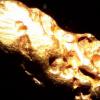


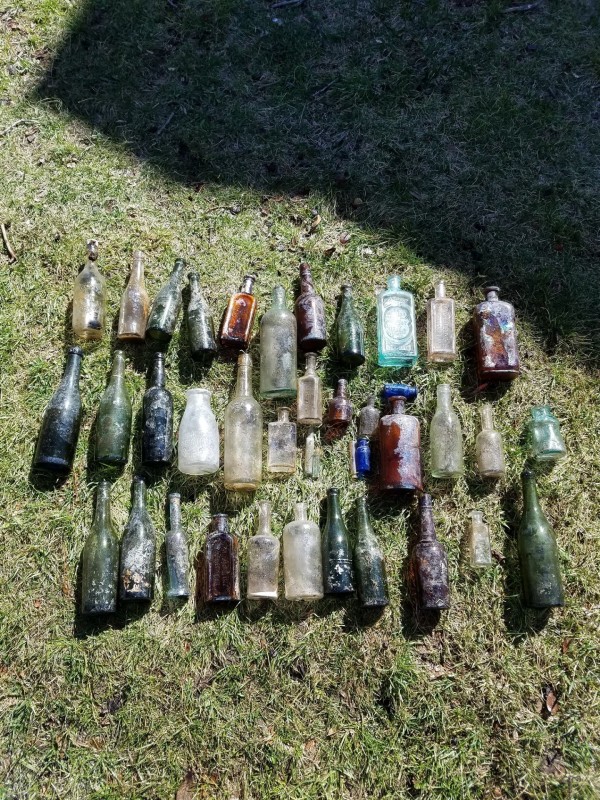
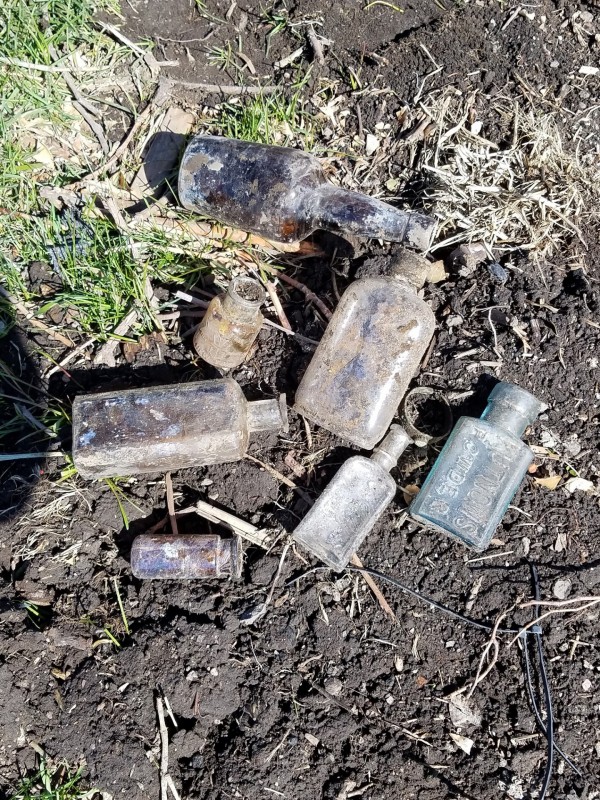
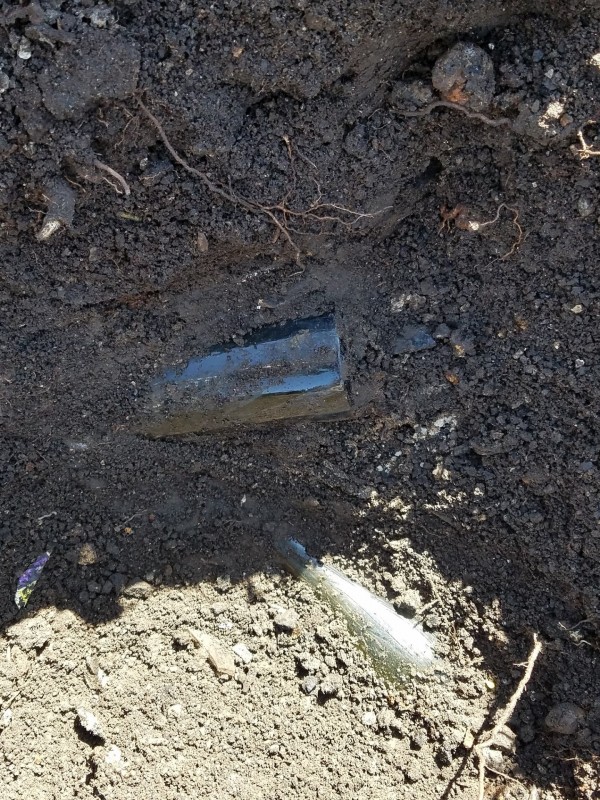
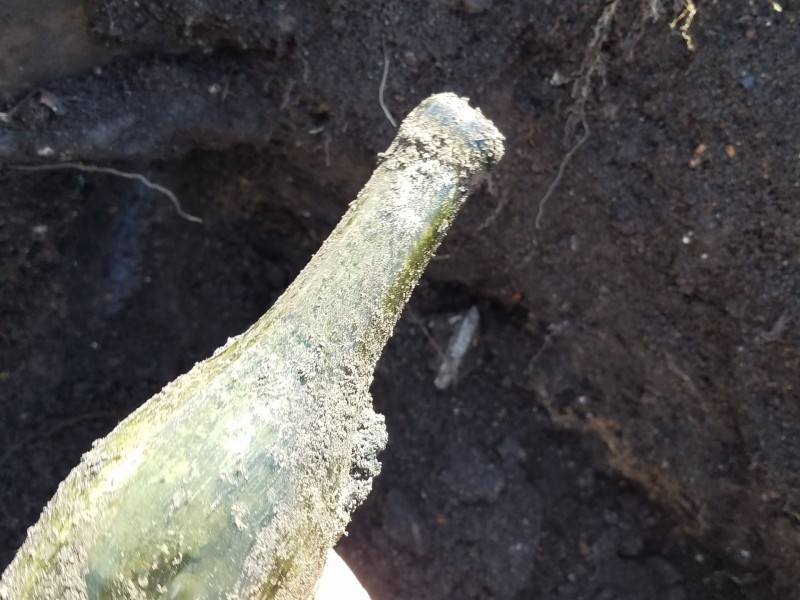
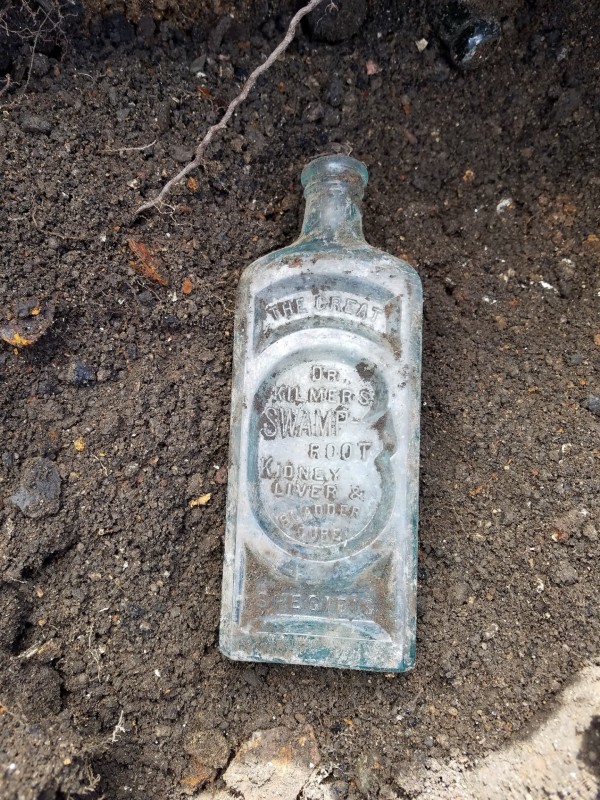
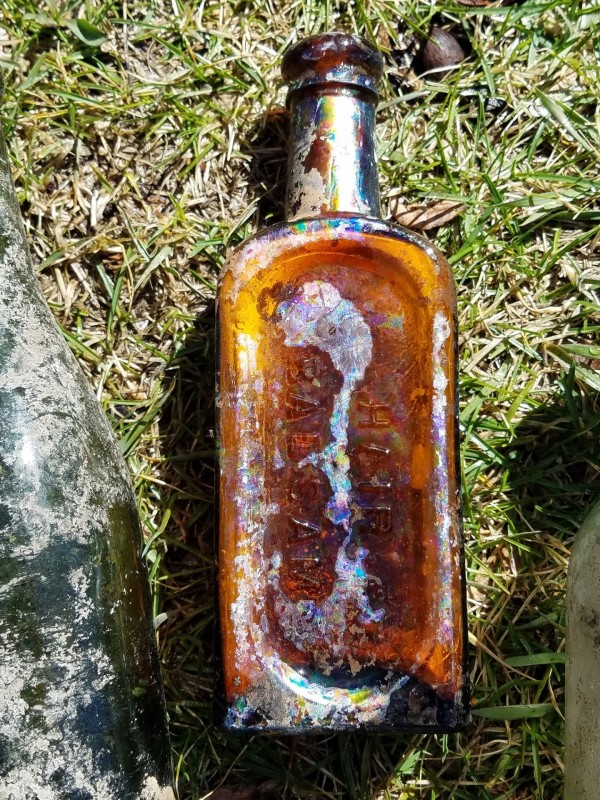
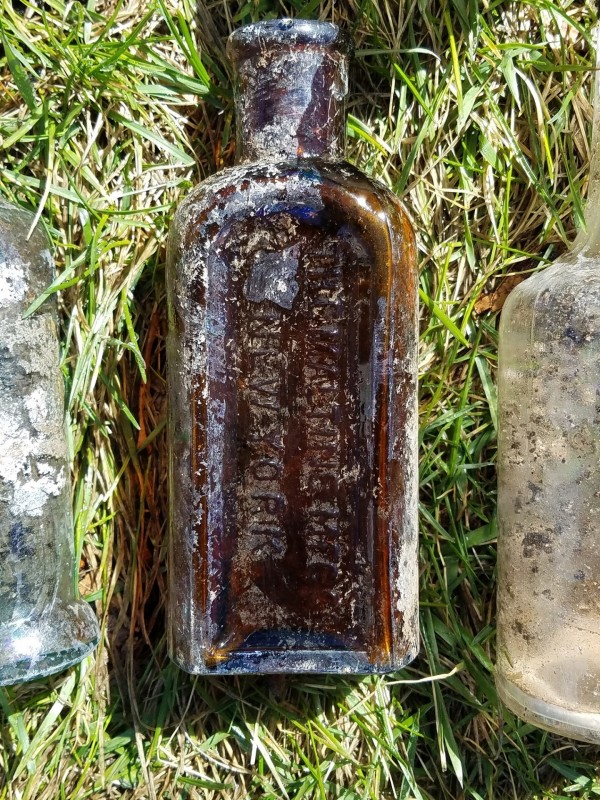
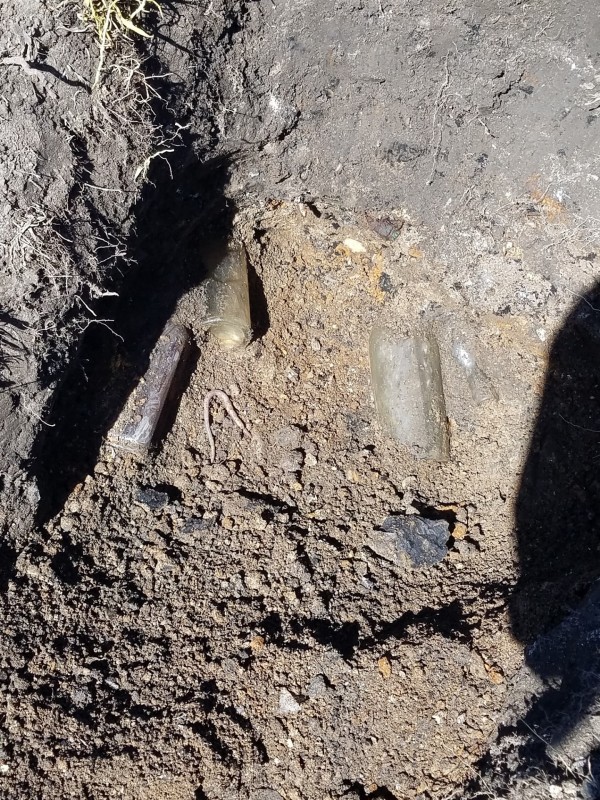
.thumb.jpg.22f35bf1598c3acfffdeb8fcdfc8fdc1.jpg)
.thumb.jpg.ef67b52913ffecfd4ca6cc932739255f.jpg)

.thumb.jpg.77e4cb5bf39d44bdd2050d2edb7dfdb1.jpg)
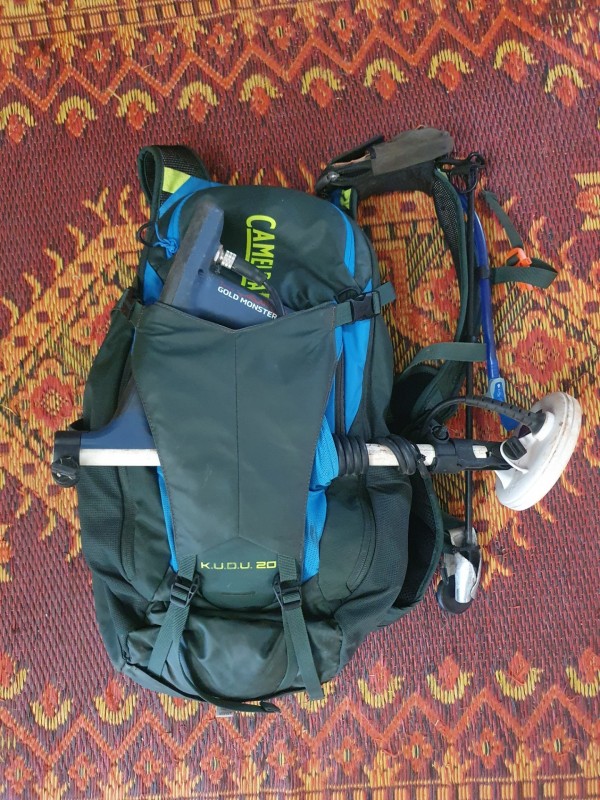

.thumb.jpg.95344db3aeef0a4c6c73420daa366191.jpg)

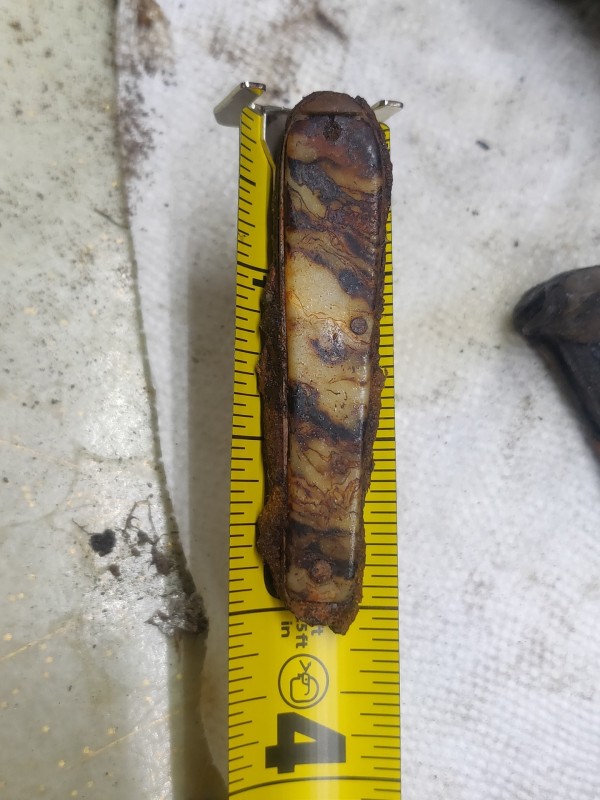
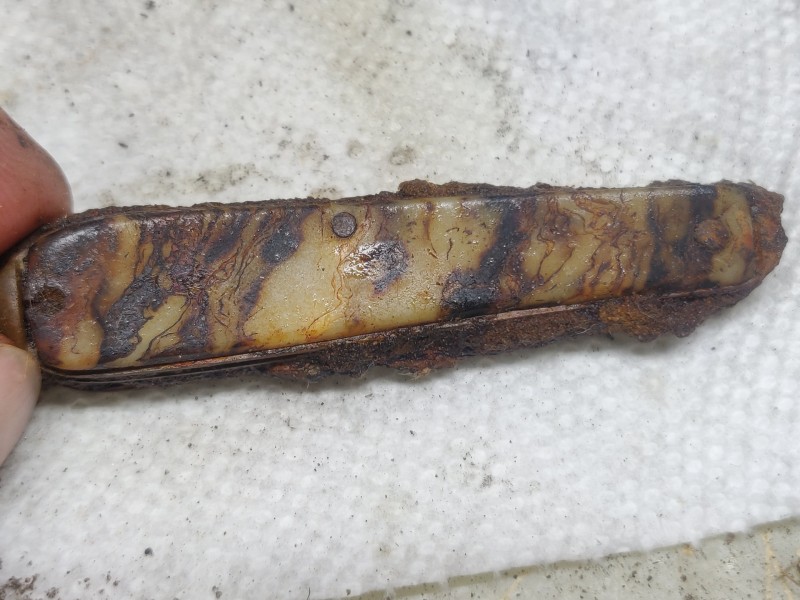
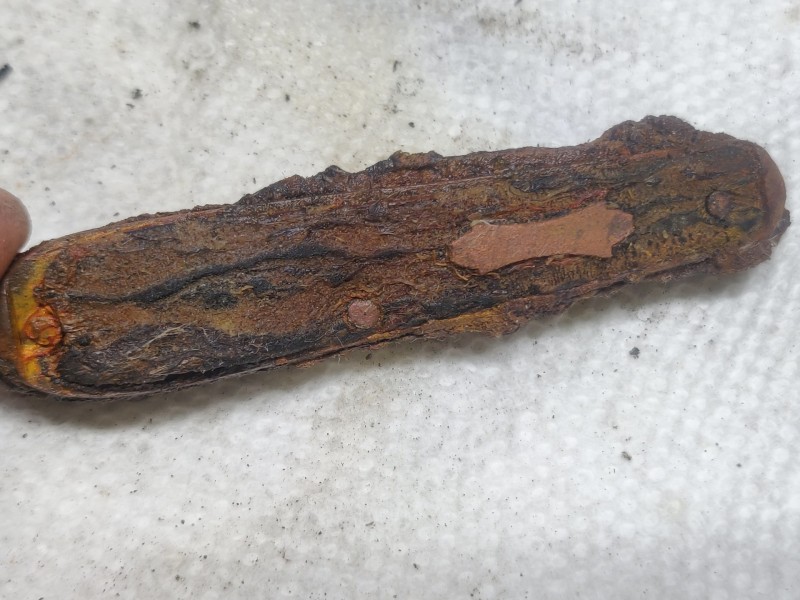
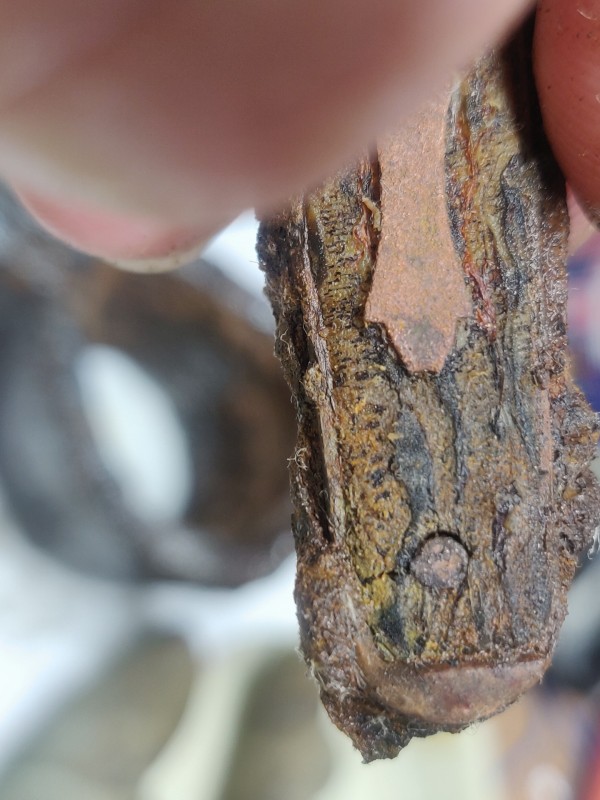
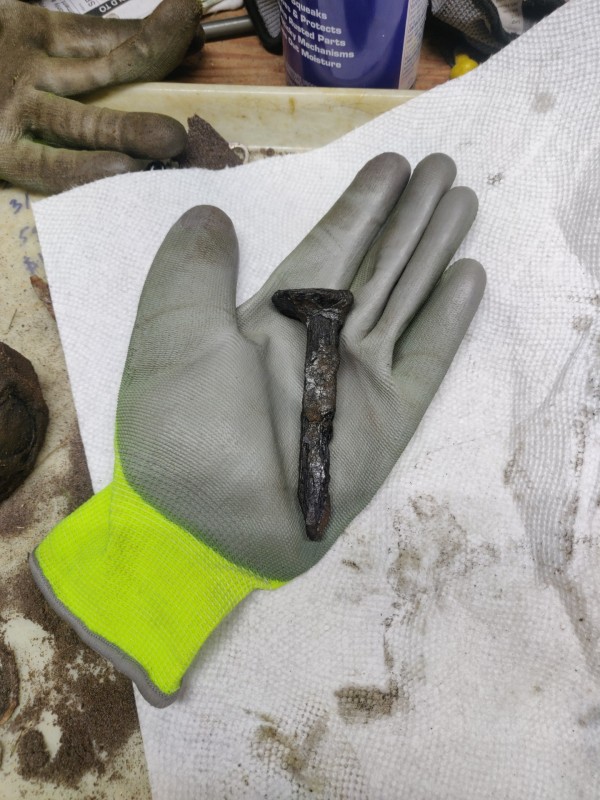
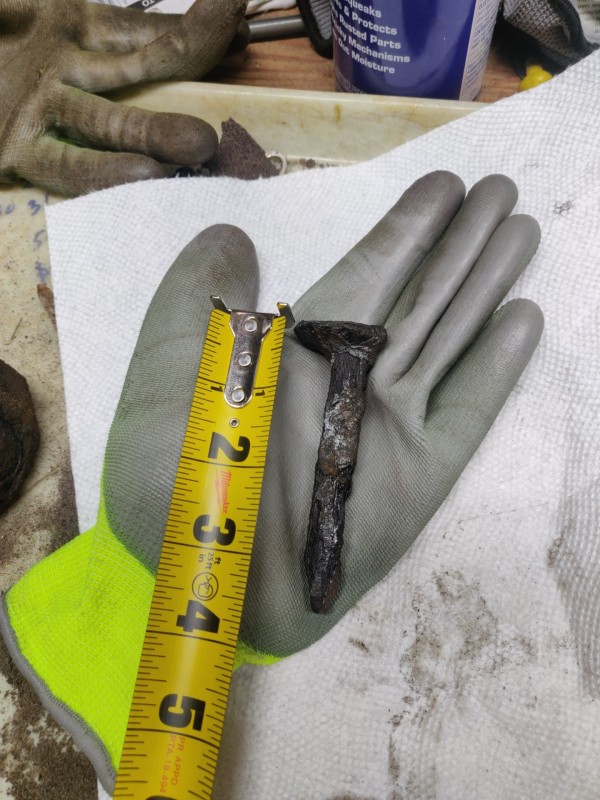
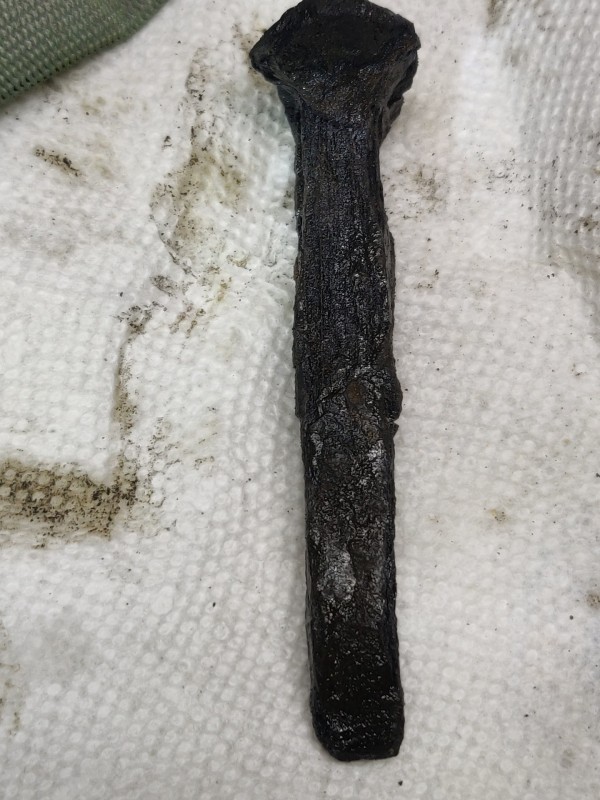
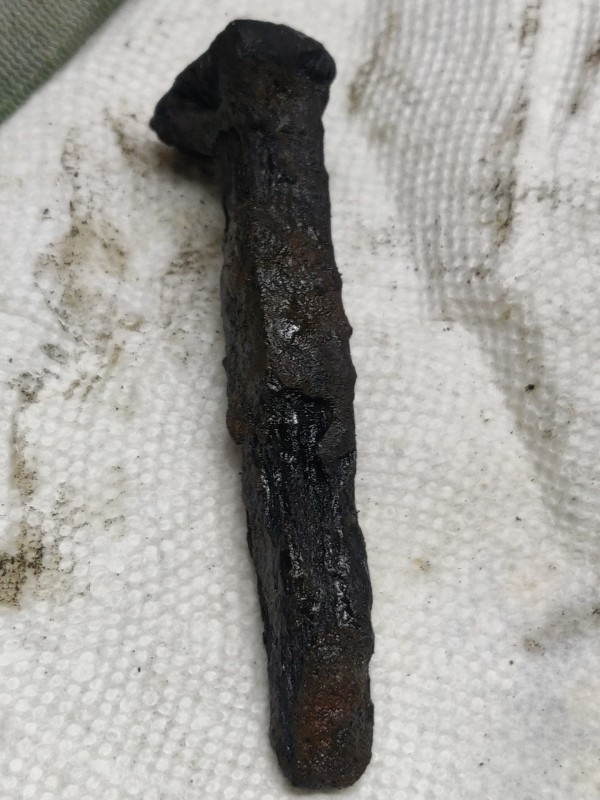
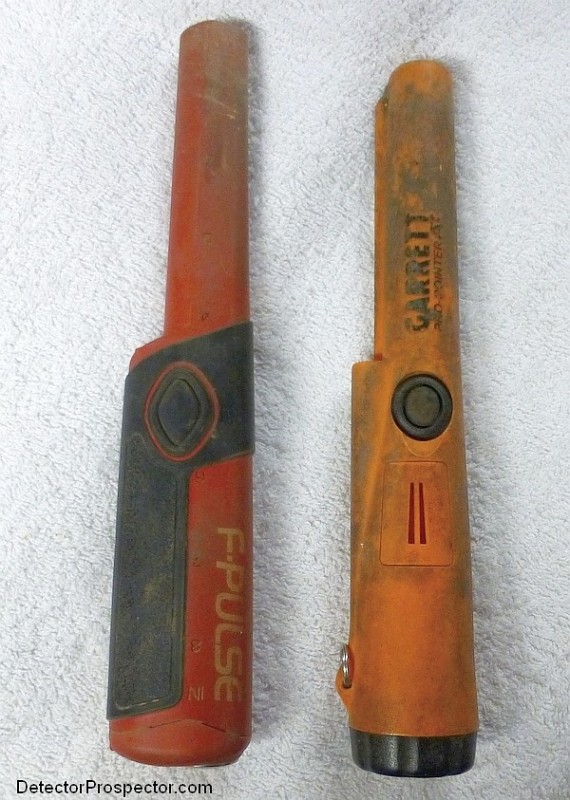
.thumb.jpg.90042894b5290b62f7bce309236544af.jpg)
.thumb.jpg.83a6fbb242f0ca342c31bef0d7634f80.jpg)
.thumb.jpg.d71314a45f3dc82bf75ac1b96e7e9201.jpg)

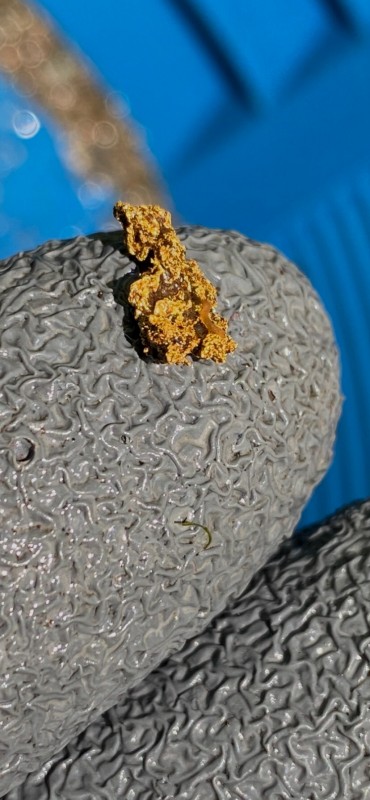
.thumb.jpg.8761b3d9b3da119b9e6d1912f67275ad.jpg)




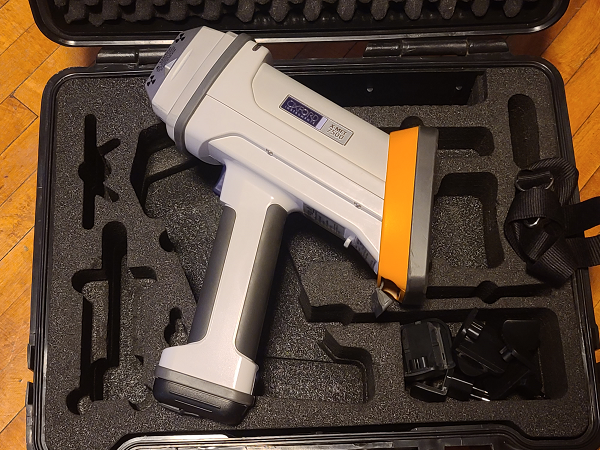

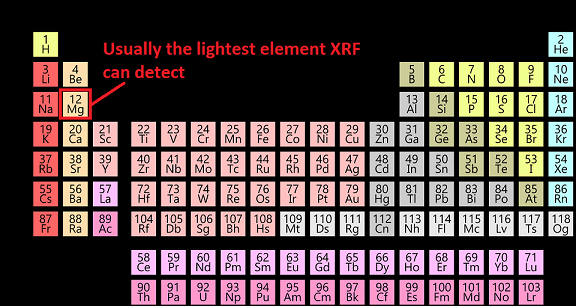
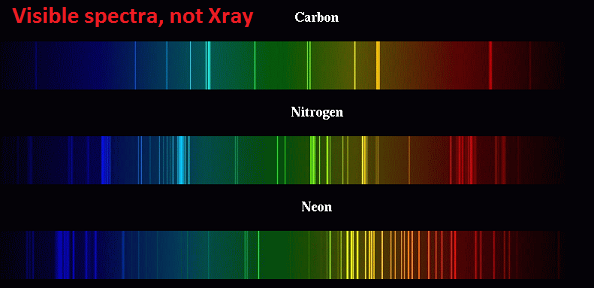
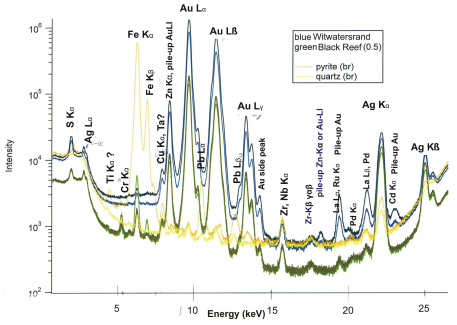

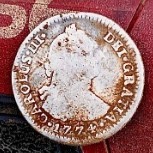
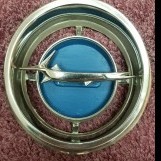
.thumb.jpg.ac5e8ee36e43bcab745dbc623fcf1874.jpg)





